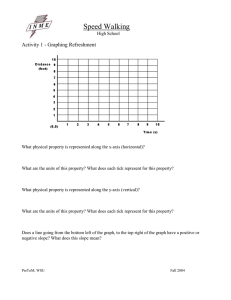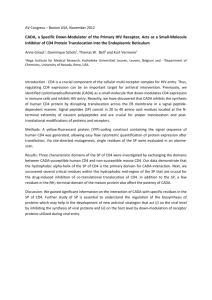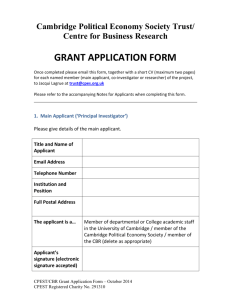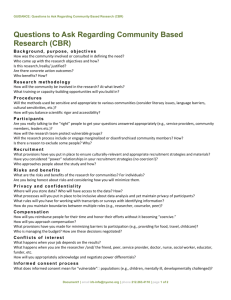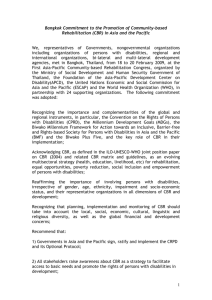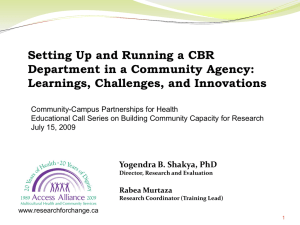Lesson Plan - Center for Outreach in Mathematics Professional
advertisement
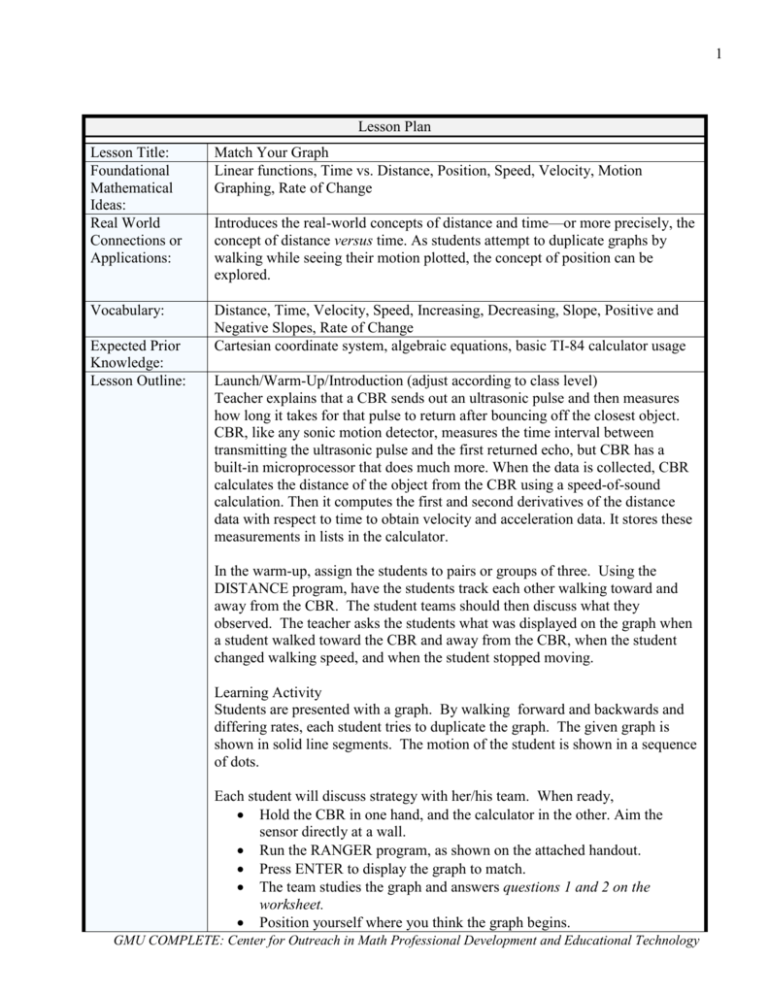
1 Lesson Plan Lesson Title: Foundational Mathematical Ideas: Real World Connections or Applications: Match Your Graph Linear functions, Time vs. Distance, Position, Speed, Velocity, Motion Graphing, Rate of Change Vocabulary: Distance, Time, Velocity, Speed, Increasing, Decreasing, Slope, Positive and Negative Slopes, Rate of Change Cartesian coordinate system, algebraic equations, basic TI-84 calculator usage Expected Prior Knowledge: Lesson Outline: Introduces the real-world concepts of distance and time—or more precisely, the concept of distance versus time. As students attempt to duplicate graphs by walking while seeing their motion plotted, the concept of position can be explored. Launch/Warm-Up/Introduction (adjust according to class level) Teacher explains that a CBR sends out an ultrasonic pulse and then measures how long it takes for that pulse to return after bouncing off the closest object. CBR, like any sonic motion detector, measures the time interval between transmitting the ultrasonic pulse and the first returned echo, but CBR has a built-in microprocessor that does much more. When the data is collected, CBR calculates the distance of the object from the CBR using a speed-of-sound calculation. Then it computes the first and second derivatives of the distance data with respect to time to obtain velocity and acceleration data. It stores these measurements in lists in the calculator. In the warm-up, assign the students to pairs or groups of three. Using the DISTANCE program, have the students track each other walking toward and away from the CBR. The student teams should then discuss what they observed. The teacher asks the students what was displayed on the graph when a student walked toward the CBR and away from the CBR, when the student changed walking speed, and when the student stopped moving. Learning Activity Students are presented with a graph. By walking forward and backwards and differing rates, each student tries to duplicate the graph. The given graph is shown in solid line segments. The motion of the student is shown in a sequence of dots. Each student will discuss strategy with her/his team. When ready, Hold the CBR in one hand, and the calculator in the other. Aim the sensor directly at a wall. Run the RANGER program, as shown on the attached handout. Press ENTER to display the graph to match. The team studies the graph and answers questions 1 and 2 on the worksheet. Position yourself where you think the graph begins. GMU COMPLETE: Center for Outreach in Math Professional Development and Educational Technology 2 Press ENTER to begin data collection. Walk backward and forward, and try to match the graph. Your position is plotted on the screen. When the sample is finished, the team examines how well your “walk” matched the graph, and answers question 3. Press ENTER to display the OPTIONS menu and choose SAME MATCH. The same student, or a teammate, can try to improve the walking technique. Then, the team answers questions 4, 5, and 6. Now, a new graph. Press ENTER to display the OPTIONS menu and choose NEW MATCH. Study the first segment and answer questions 7 and 8. Study the entire graph and answer questions 9 and 10. Position yourself where you think the graph begins, press ENTER to begin data collection, and try to match the graph. When the sampling stops, answer questions 11 and 12. When the sample is finished, the team examines how well your “walk” matched the graph. Press ENTER to display the OPTIONS menu and choose SAME MATCH. The same student, or a teammate, can try to improve the walking technique. Now, another new graph. Study the graph and answer questions 13, 14, and 15. Continue as before until each student has had ample opportunities to duplicate a graph Assessment and Rubric: Handouts: Additional Resources (if applicable): Include differentiation, if applicable Have students convert their rate of walking in feet per second to miles per hour (or meters per second to kilometers per hour). Once they have mastered the Distance-Time match, challenge your students to a Velocity-Time match. Closure/Student Reflection Discuss the meaning of slope and velocity as it relates to this activity. Discuss the meaning of positive and negative slope in context. Discuss the meaning of zero slope in context. Informal/Observations: Are students able to recreate the graphs, make the connections between motion and the graph, understanding negative and positive velocity? Do they see the connection between distance and time? What difficulties are they having? What is not clear? What was easy for them to comprehend? Formal/Assessments/Rubrics: See attached worksheet Worksheet Attached GMU COMPLETE: Center for Outreach in Math Professional Development and Educational Technology



